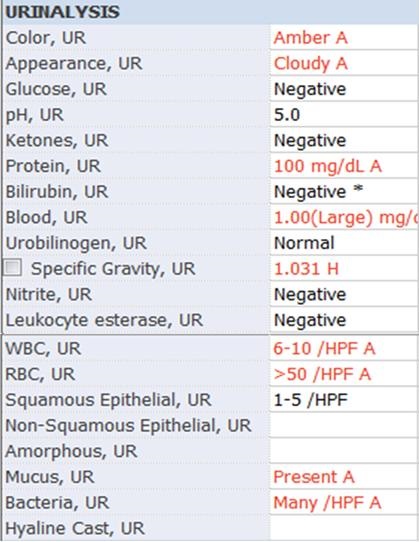

Correct!
5. All of the above
Beside ultrasonography showed the inferior vena cava diameter to be approximately 2.3 cm (normal 1.5-2.5 cm in adults). The fractional excretion of sodium (FeNA) was 1.1%, a random urine osmolality was 502 mOsm/kg of water (normal 300-900) and urine specific gravity was 1.031 (normal 1.000-1.030). Urinalysis is shown in Figure 5.

Figure 5. Urinalysis obtained on hospital day 2.
A trial of diuretics did not increase urine output. A nephrology consult was obtained and suggested the most likely diagnosis was acute tubular necrosis. The creatinine and blood urea nitrogen were initially normal but continued to rise and hemodialysis was begun. The patient tolerated the hemodialysis well and the urine output was increasing until hospital day 8. At that time the patient became febrile 39.7º C, the white blood cell count rose to 13,400 from 2,800 cells per microliter, the heart rate increased to 125, and the blood pressure decreased to <90/60 mm Hg. There was also difficulty with the hemodialysis secondary to the filter clotting.
Which of the following are true? (Click on the correct answer to proceed to the fifth of six pages)